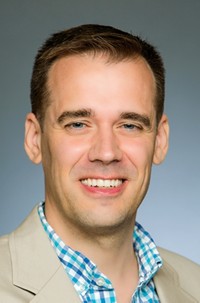Advertisement
Grab your lab coat. Let's get started
Welcome!
Welcome!
Create an account below to get 6 C&EN articles per month, receive newsletters and more - all free.
It seems this is your first time logging in online. Please enter the following information to continue.
As an ACS member you automatically get access to this site. All we need is few more details to create your reading experience.
Not you? Sign in with a different account.
Not you? Sign in with a different account.
ERROR 1
ERROR 1
ERROR 2
ERROR 2
ERROR 2
ERROR 2
ERROR 2
Password and Confirm password must match.
If you have an ACS member number, please enter it here so we can link this account to your membership. (optional)
ERROR 2
ACS values your privacy. By submitting your information, you are gaining access to C&EN and subscribing to our weekly newsletter. We use the information you provide to make your reading experience better, and we will never sell your data to third party members.
Materials
ACS Award In Inorganic Chemistry
Sponsored by Aldrich Chemical
by Michael Torrice
January 3, 2011
| A version of this story appeared in
Volume 89, Issue 1
Robert J. Cava, a professor of chemistry at Princeton University, likes to point out that buried deep within most of our modern electronic technologies are special materials. Cell phones, televisions, and computers all employ materials with unique electronic and magnetic properties that solid-state chemists such as Cava have discovered and optimized.
“These properties arise from chemistry somehow, and you have to figure out how,” Cava says. “Thankfully, the world is complicated enough that that makes a lifetime job.”
Cava has spent his career creating and studying solids with special magnetic and electronic characteristics, including new, innovative high-temperature superconductors, exotic magnets, and transparent electronic conductors. He is being honored for these seminal contributions to solid-state chemistry.
“I think it’s a great recognition by the inorganic chemistry community of the solid-state chemistry field, and I really appreciate it,” Cava says about receiving the award. “We are different because we don’t work with molecules, but we make very complicated materials where structure and properties are related in really complex and interesting ways.”
High-temperature superconductors have been a major focus of Cava’s research. His early work on the cuprate superconductor YBa2Cu3O9 has been cited more than 1,400 times in scientific literature. More recently, he and his colleagues discovered how to influence the balance between magnetism and superconductivity in lanthanide nickel borocarbides to produce novel superconductors.
Creating new transparent electronic conductors is also a chemical balancing act, Cava says. His group has worked on producing materials for possible use in flat-panel displays, such as zinc-doped indium oxides, that have big enough bandgaps to allow light to pass through the solid but can also conduct current effectively.
Other interesting materials that Cava has synthesized include quirky solids called frustrated magnetic systems. The crystal lattice structure of these materials prevents their atoms’ spins from settling on a single alignment when frozen to near absolute zero. Because of this spin switching, these solids retain finite entropy at absolute zero, similar to a property that Linus Pauling described about ice.
“Cava has transformed the discipline of solid-state chemistry in a fundamental manner,” says Peter P. Edwards, a chemistry professor at Oxford University. “No one has made more significant and wide-ranging contributions to our understanding of how atoms combine to give rise to new inorganic materials with quite spectacular and breathtaking electronic and magnetic properties.”
At Princeton, Cava has won several awards for teaching undergraduates. “One must also give great credit to Cava the teacher,” Edwards says, “imparting his knowledge, insights, and joy in educating the young—and sometimes the not so young!”
Cava earned a B.S. and an M.S. in materials science and engineering in 1974 and a Ph.D. in ceramics in 1978, all from the Massachusetts Institute of Technology. After graduate school, he spent a year as a National Research Council postdoctoral scholar at the National Institute of Standards & Technology. He then worked at Bell Laboratories for 16 years before leaving to join the faculty of Princeton in 1996. Cava served as the Princeton chemistry department chair from 2004 to 2011.
Over his career, Cava has published some 500 journal articles and mentored about 15 graduate students. In 1998, he received the ACS Award in the Chemistry of Materials.
Cava will present the award address before the Division of Inorganic Chemistry.







Join the conversation
Contact the reporter
Submit a Letter to the Editor for publication
Engage with us on Twitter